Effluent Treatment Plant (ETP) automation refers to the use of advanced control systems, sensors, and data analytics to manage and optimize the operations of an effluent treatment plant. Automation in Effluent Treatment Plants offers significant advantages in terms of efficiency, regulatory compliance, and operational cost savings.
Key Components of ETP Automation
Sensors and Instrumentation:
- Flow Meters: Measure the flow rate of effluent entering the treatment plant to ensure proper distribution across treatment units.
- pH Sensors: Monitor the acidity or alkalinity of the water, which is crucial for adjusting chemical dosages.
- Dissolved Oxygen (DO) Sensors: Measure oxygen levels to ensure adequate aeration in biological treatment processes.
- Turbidity Sensors: Monitor water clarity, which can be an indicator of suspended solids in the water.
- COD/BOD/TSS/TDS Sensors: Measure the quality of final discharge of water as per the norms of Pollution Control Boards.
- Chemical Dosage Systems: Automated chemical injection systems control the addition of coagulants, flocculants, and disinfectants to optimize treatment processes.
PLCs/ DCS/ SCADA control:
- DCS/PLCs serve as the backbone for automation. They control and monitor the various components of the ETP, such as pumps, valves, mixers, and dosing systems. It ensures that the right actions are taken based on real-time data inputs, triggering alarms, adjustments, or shutdowns when required. Systems allow for data analysis, reporting, and remote troubleshooting.
Automated Chemical Dosing Systems:
- Chemical dosing (e.g., for coagulation, flocculation, or neutralization) can be fully automated based on parameters like pH, turbidity, or flow rate.
- These systems ensure precise chemical management, reducing chemical consumption and improving treatment efficiency.
Data Analytics and Reporting:
- Automation enables continuous data collection, which can be analyzed to identify trends, optimize operations, and predict maintenance needs.
- Historical data can also be used to generate compliance reports for regulatory bodies.
Alarms and Notifications:
- Automated systems can send real-time alerts to operators via email, SMS, or within the SCADA system whenever there is a deviation from set parameters, like excessive turbidity or low dissolved oxygen levels.
- These alarms help ensure prompt corrective action to avoid treatment failures.
Benefits of ETP Automation
Improved Efficiency:
- Automation optimizes processes by adjusting parameters in real-time. This leads to better resource management, reduced waste, and lower operational costs.
Consistency and Reliability:
- Automated systems provide consistent monitoring and control, reducing human error and maintaining stable effluent quality.
Regulatory Compliance:
- Automated systems can generate accurate reports on water quality and treatment processes, helping plants meet environmental regulations and standards.
Reduced Labor Costs:
- With fewer manual interventions required, automation reduces labor costs and minimizes the risk of human error in daily operations.
Predictive Maintenance:
- Data from sensors can be analyzed to predict equipment failure or maintenance needs, allowing for timely repairs and avoiding unplanned downtime.
Energy Savings:
- Automation helps optimize energy usage by controlling the operation of pumps, blowers, and other equipment based on demand, leading to significant energy savings.
Real-time Monitoring and Remote Access:
- SCADA systems allow for remote monitoring and control, providing operators with real-time data from anywhere. This improves response times and decision-making.
Applications of Automation in ETP
- Primary Treatment: Automated systems can optimize the removal of large solids and debris from the effluent through screening and settling processes.
- Secondary Treatment: Biological processes, such as activated sludge or biofilm reactors, can be automated to ensure proper aeration, mixing, and nutrient levels.
- Tertiary Treatment: Automation ensures efficient filtration, disinfection (e.g., UV, chlorine), and polishing of effluent before discharge or reuse.
- Sludge Management: Automation can streamline the dewatering, drying, and disposal of sludge, reducing manual effort and improving efficiency.
Challenges in ETP Automation
Initial Setup Costs:
- The upfront cost of installing automation systems, including sensors, controllers, and software, can be significant.
System Complexity:
- Integrating various technologies and maintaining the system can require specialized knowledge and expertise.
Cybersecurity:
- As more plants move toward remote monitoring and control, there is a growing need for robust cybersecurity measures to protect sensitive data and prevent unauthorized access.
Reliability of Sensors:
- Sensor calibration and maintenance are critical for ensuring accurate data collection. Malfunctioning sensors can lead to incorrect dosing or process adjustments.




